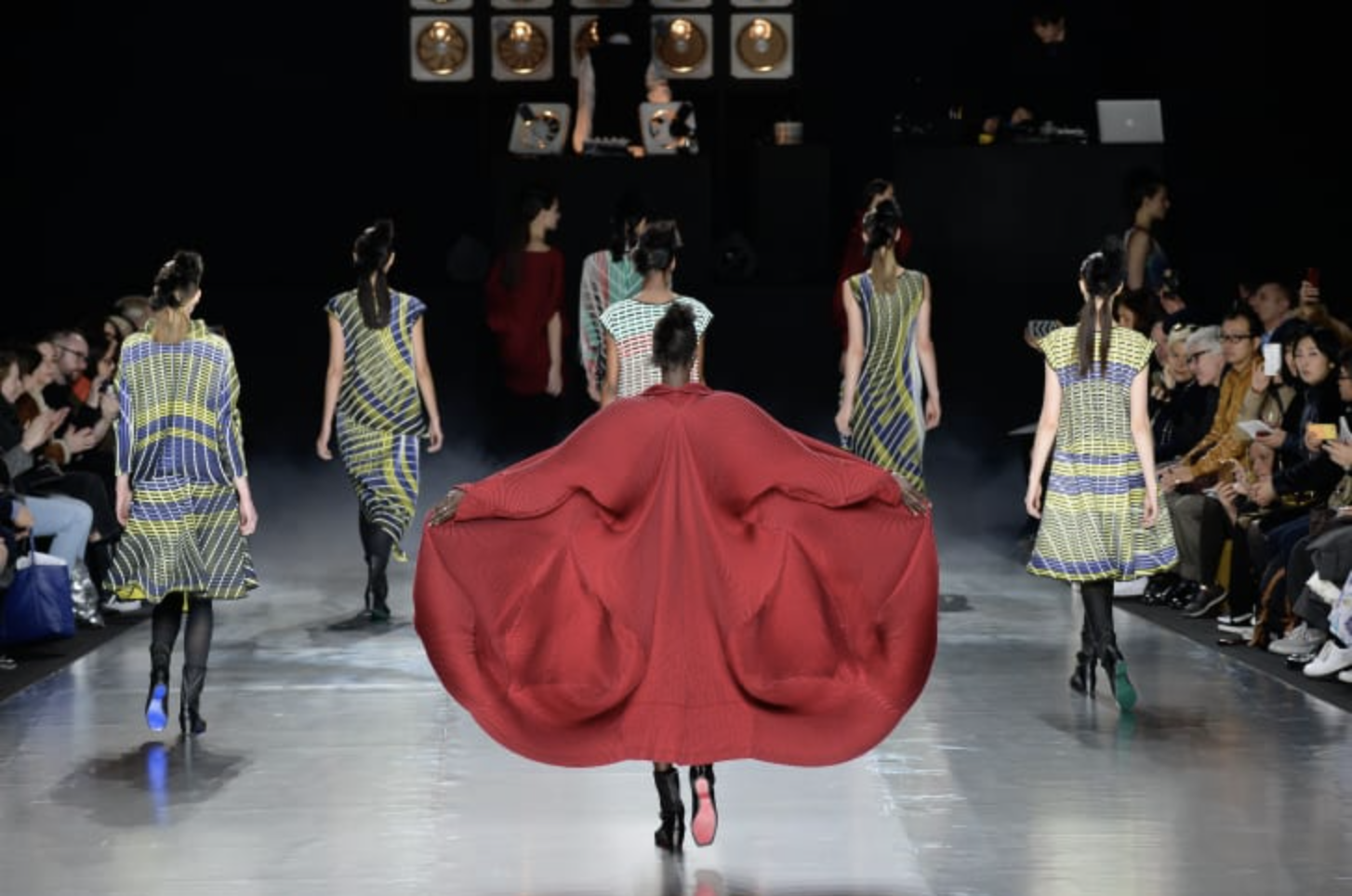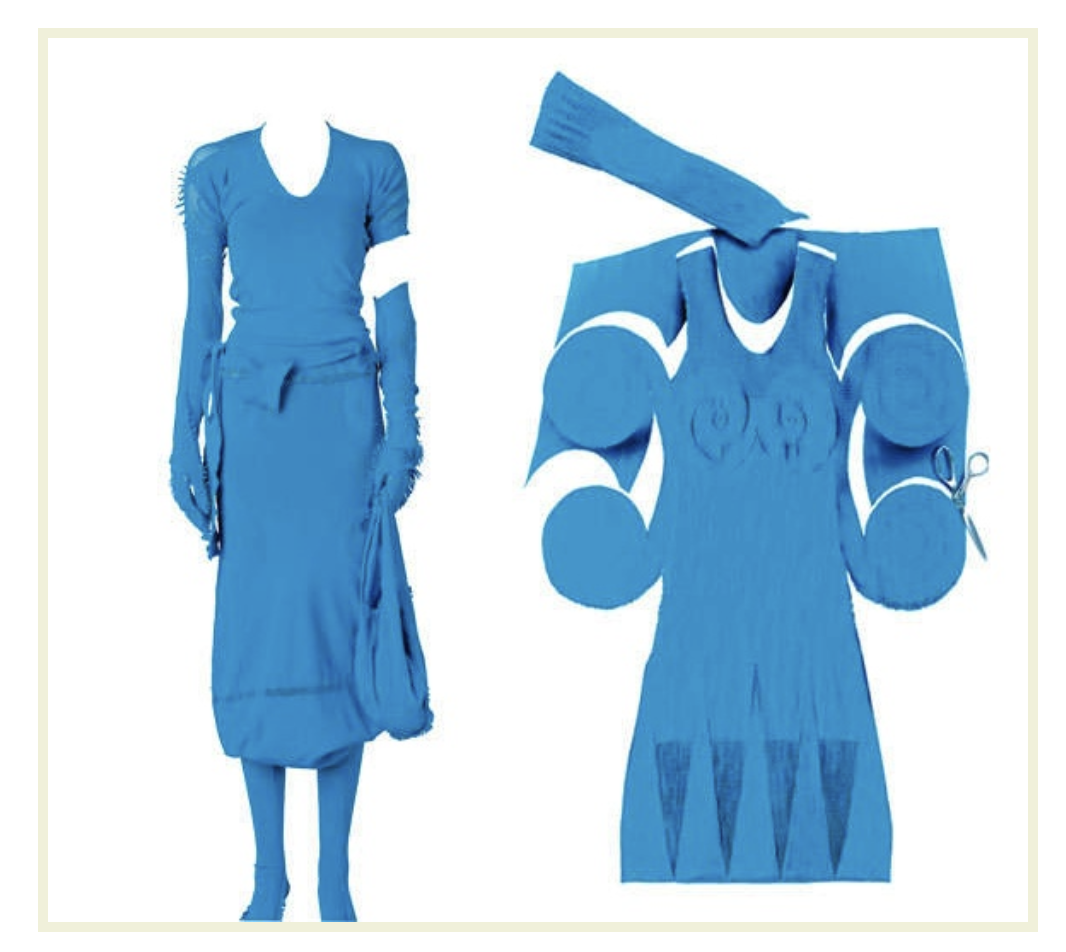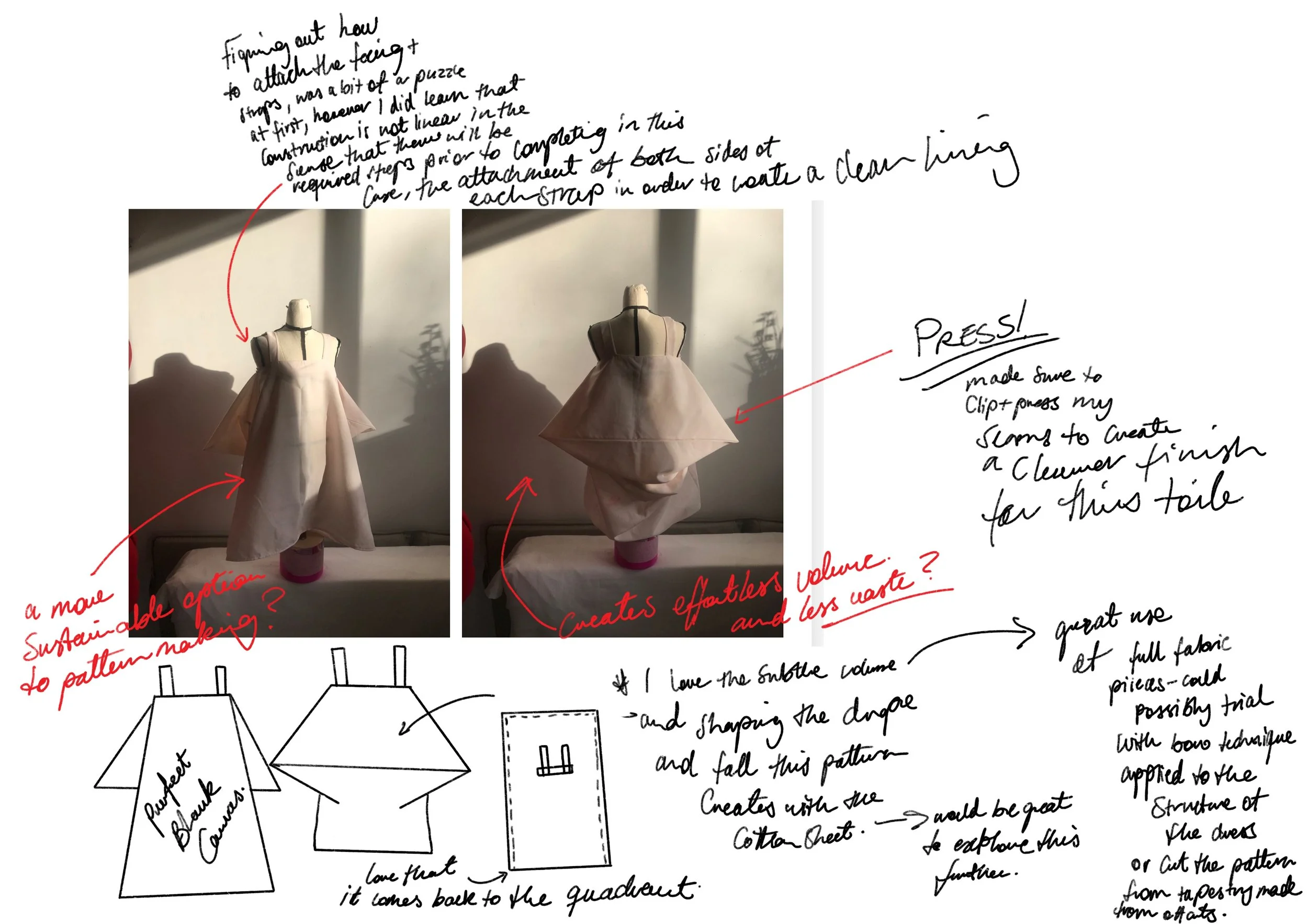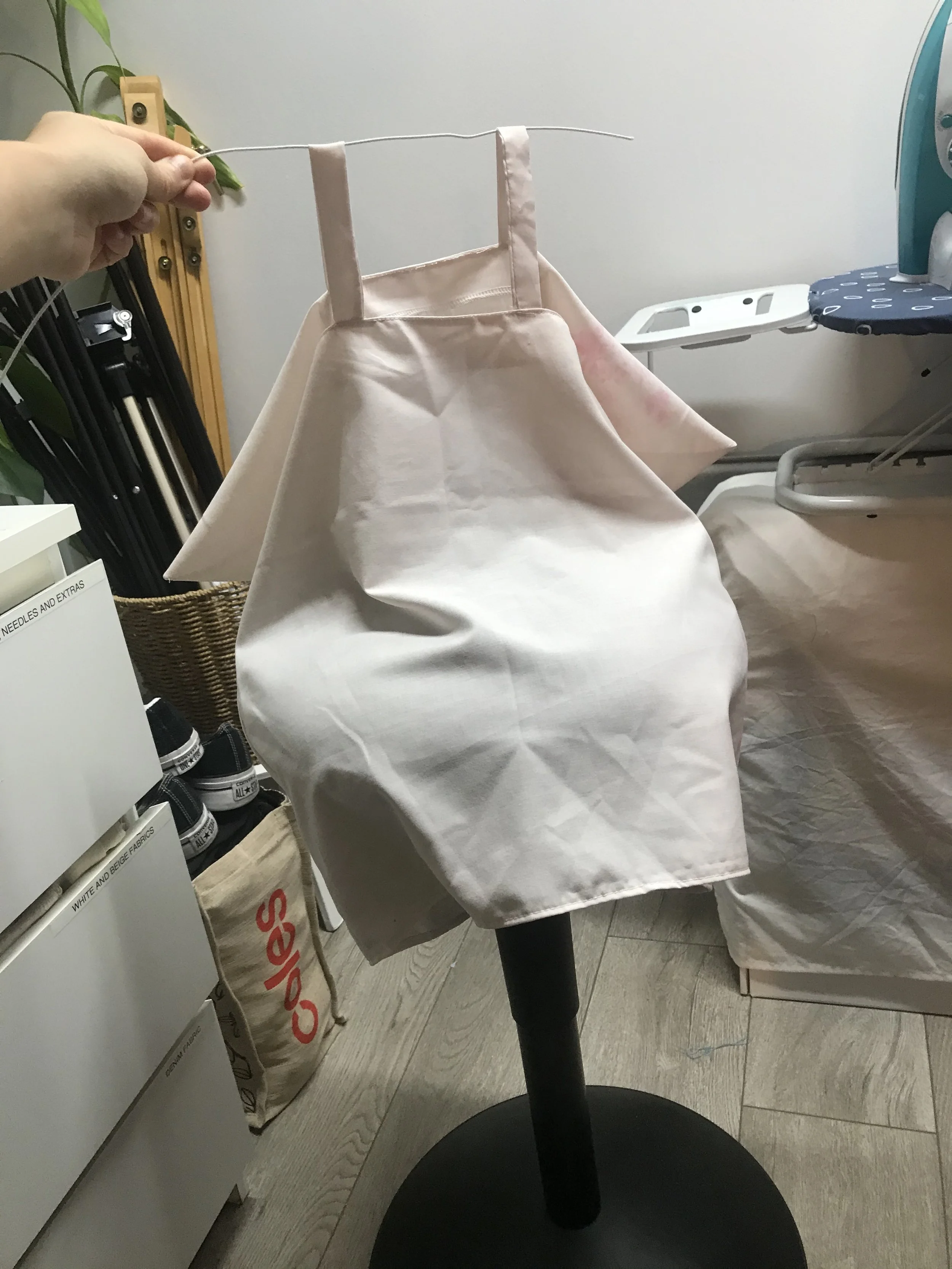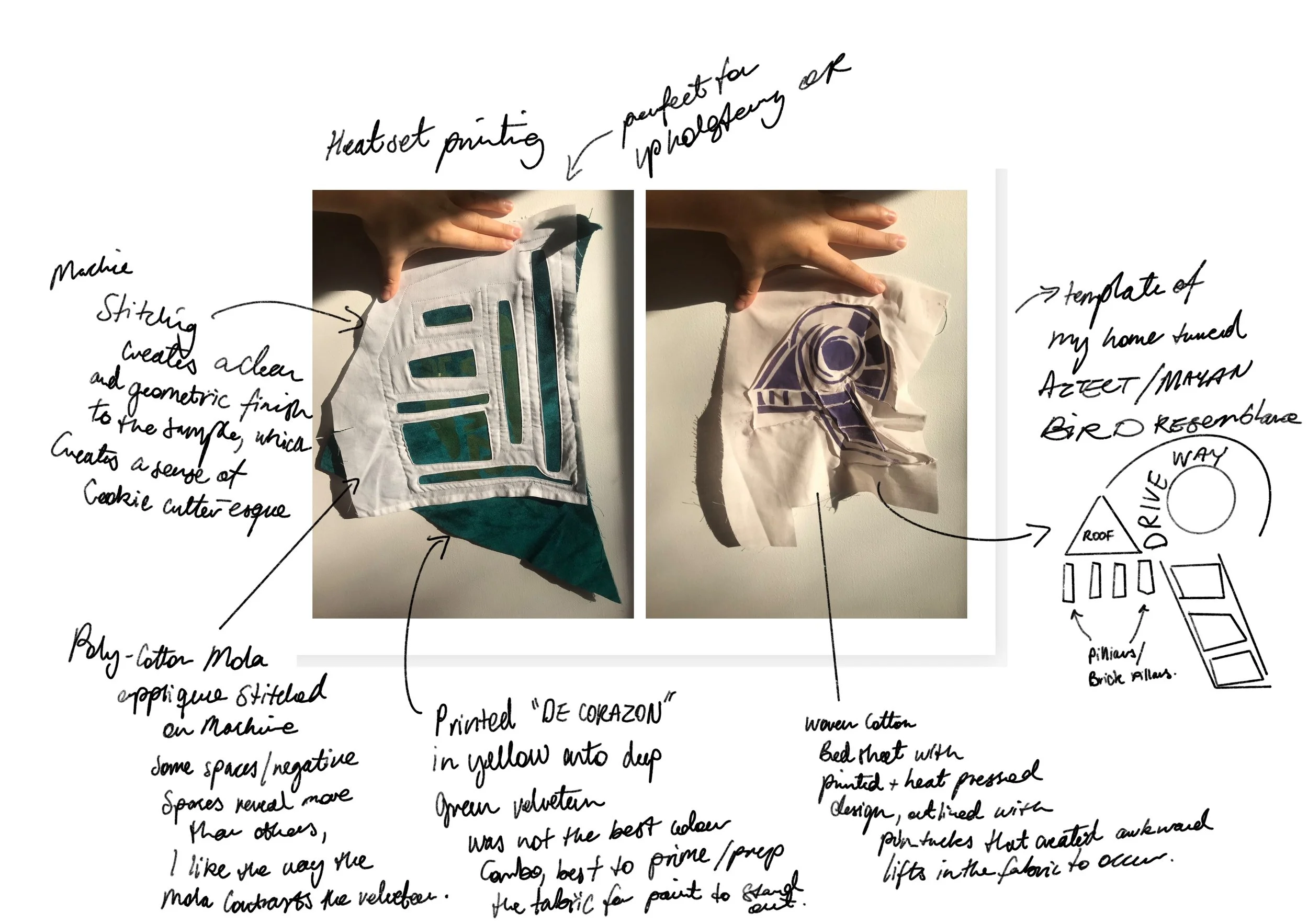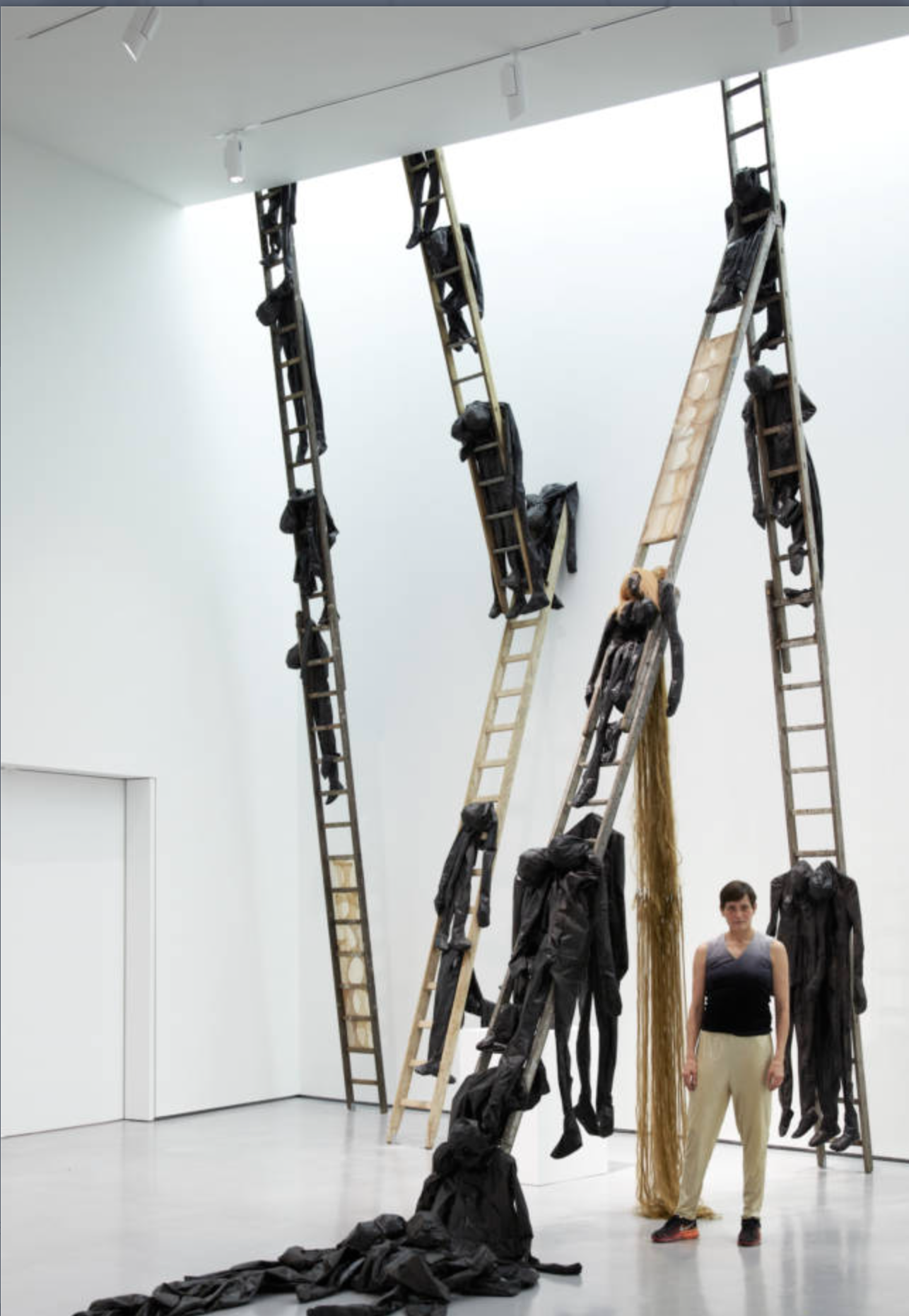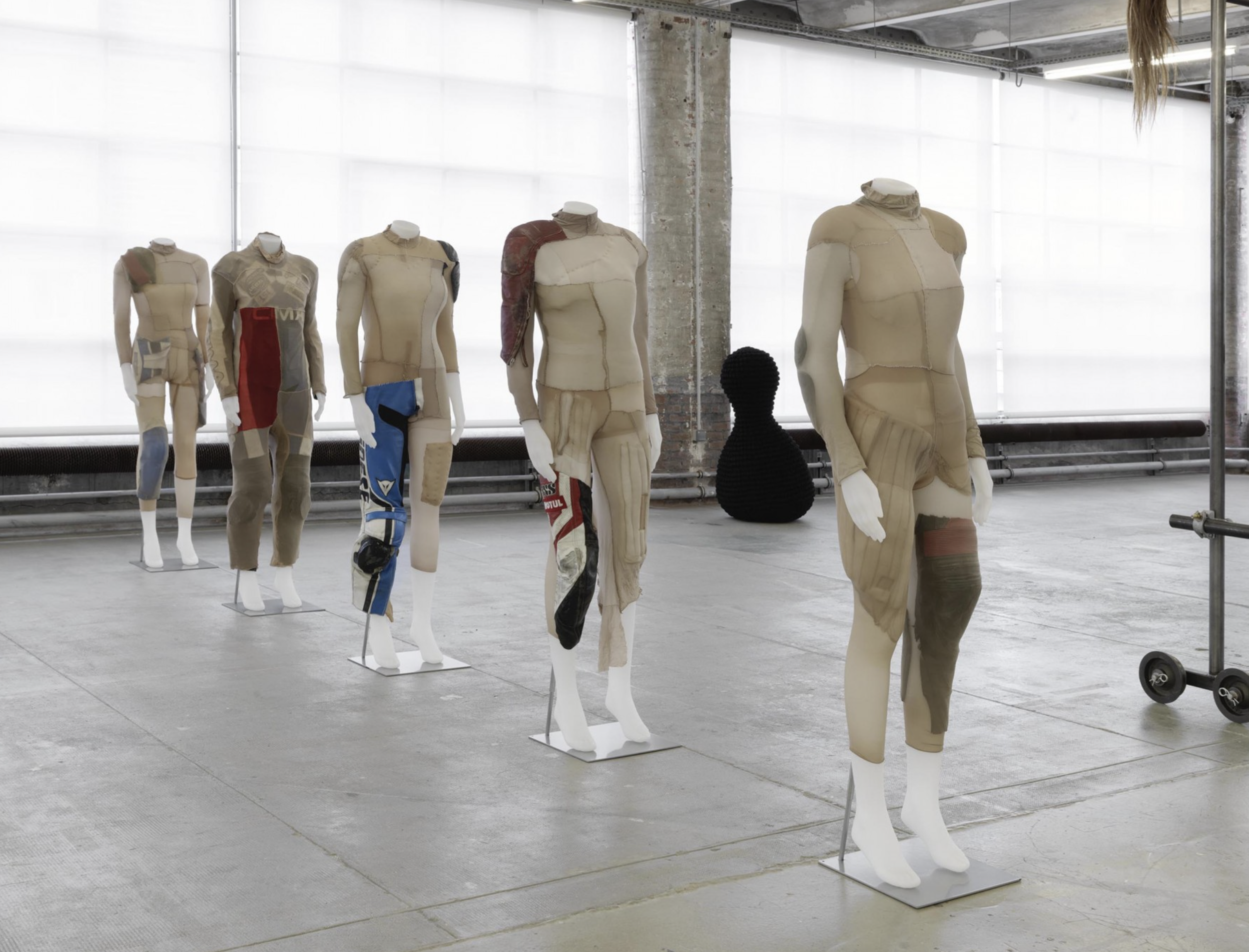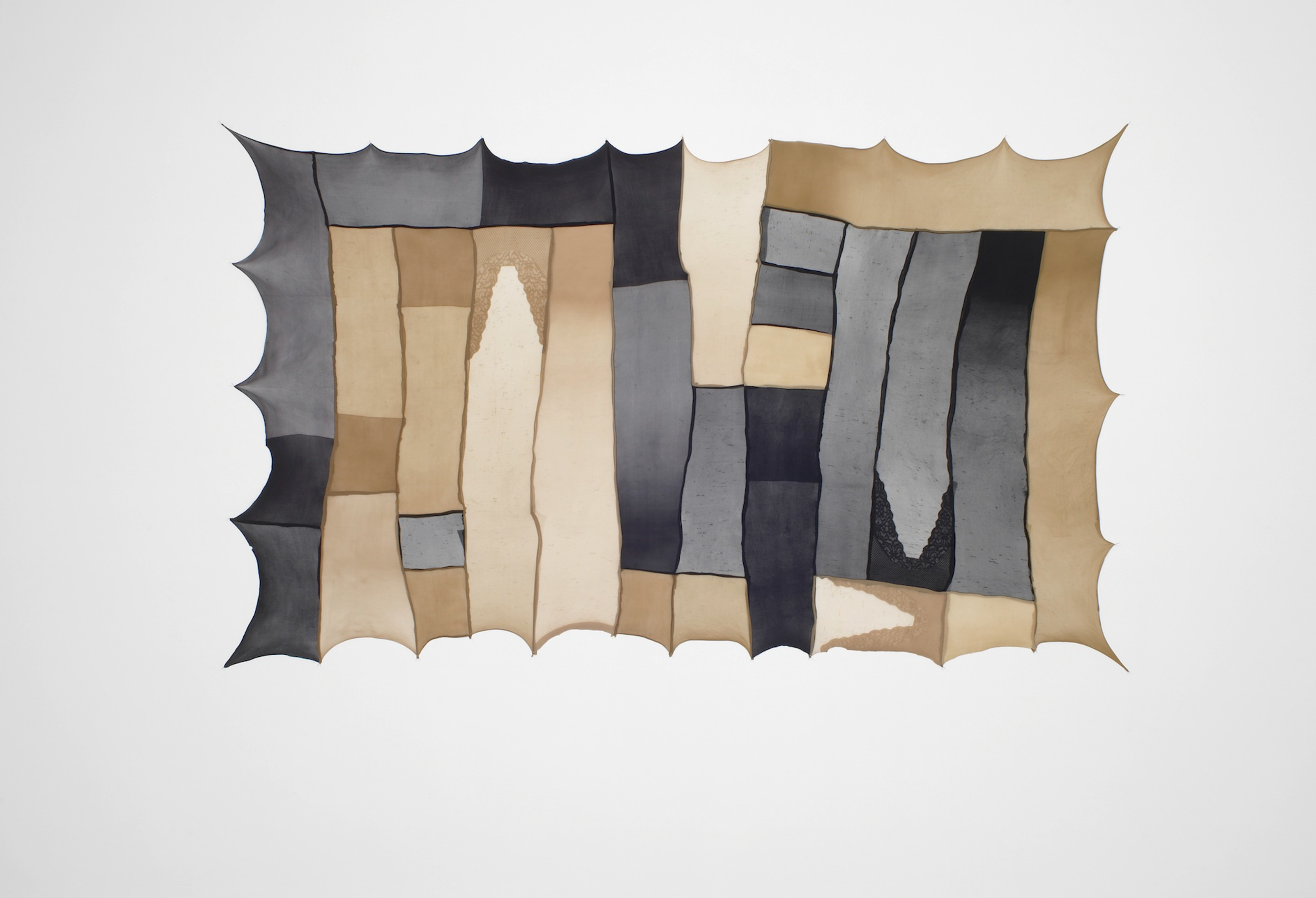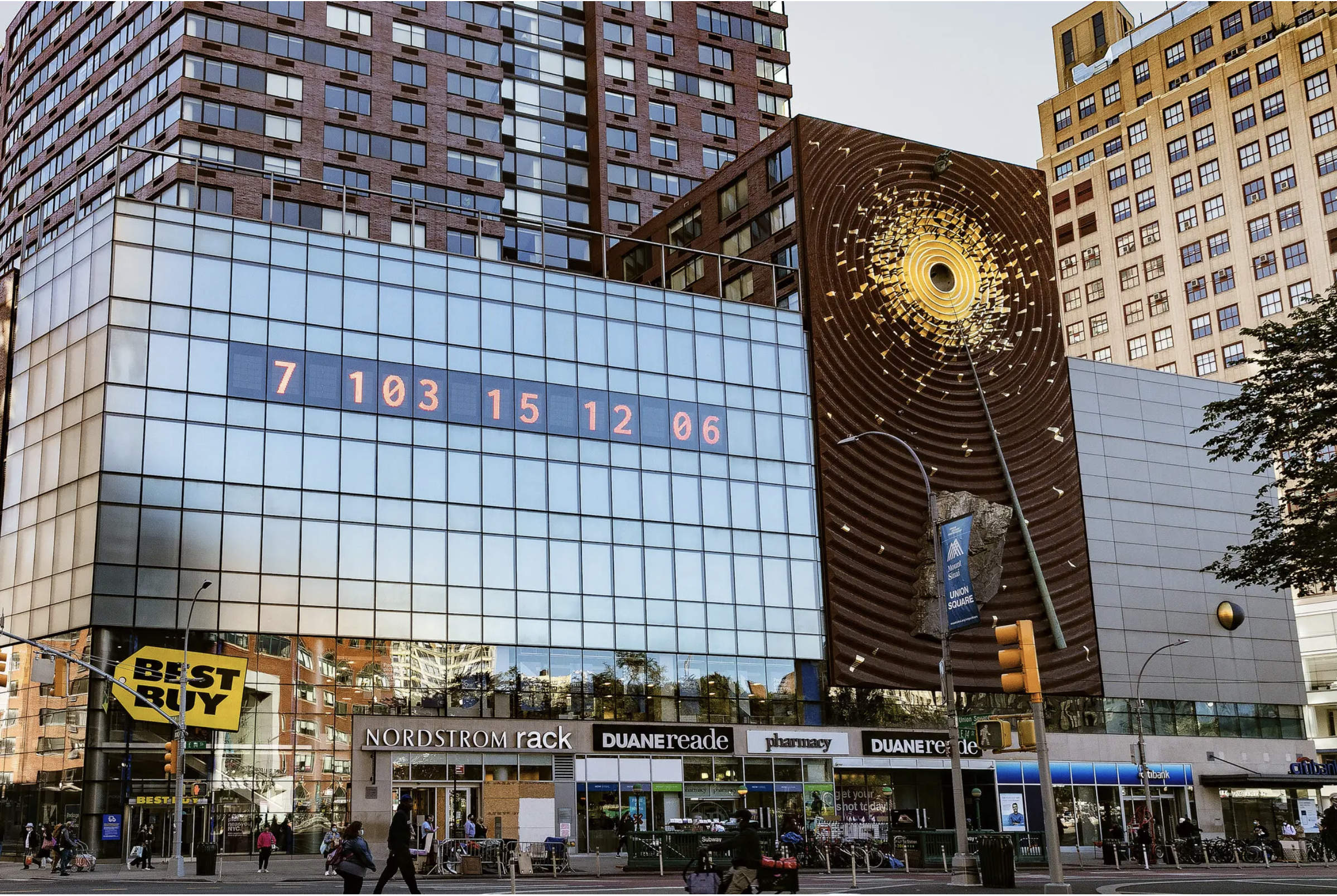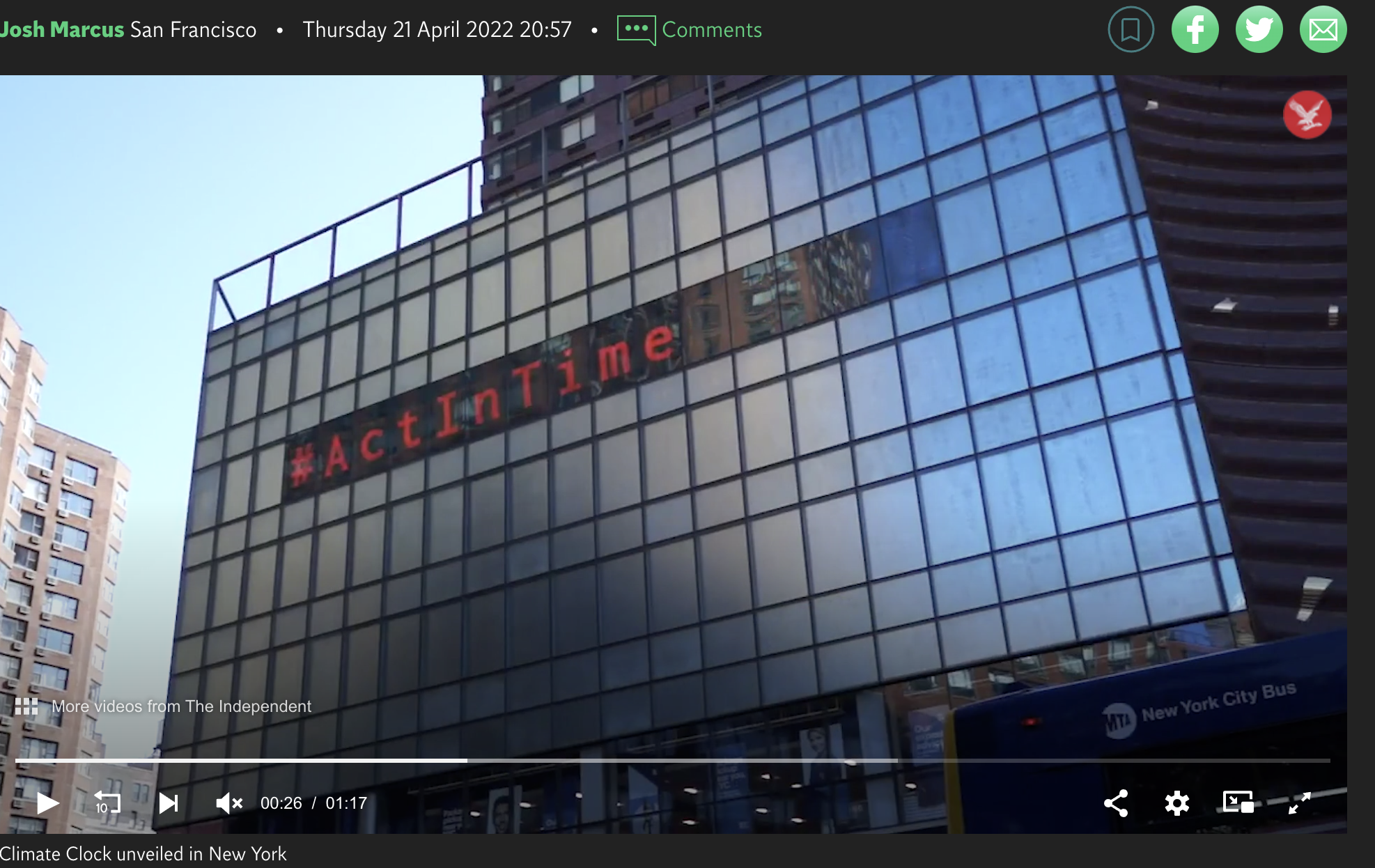Issey Miyake dress/
Transfer printing
Week Four: stencilling and decorating materials with heat pressed prints
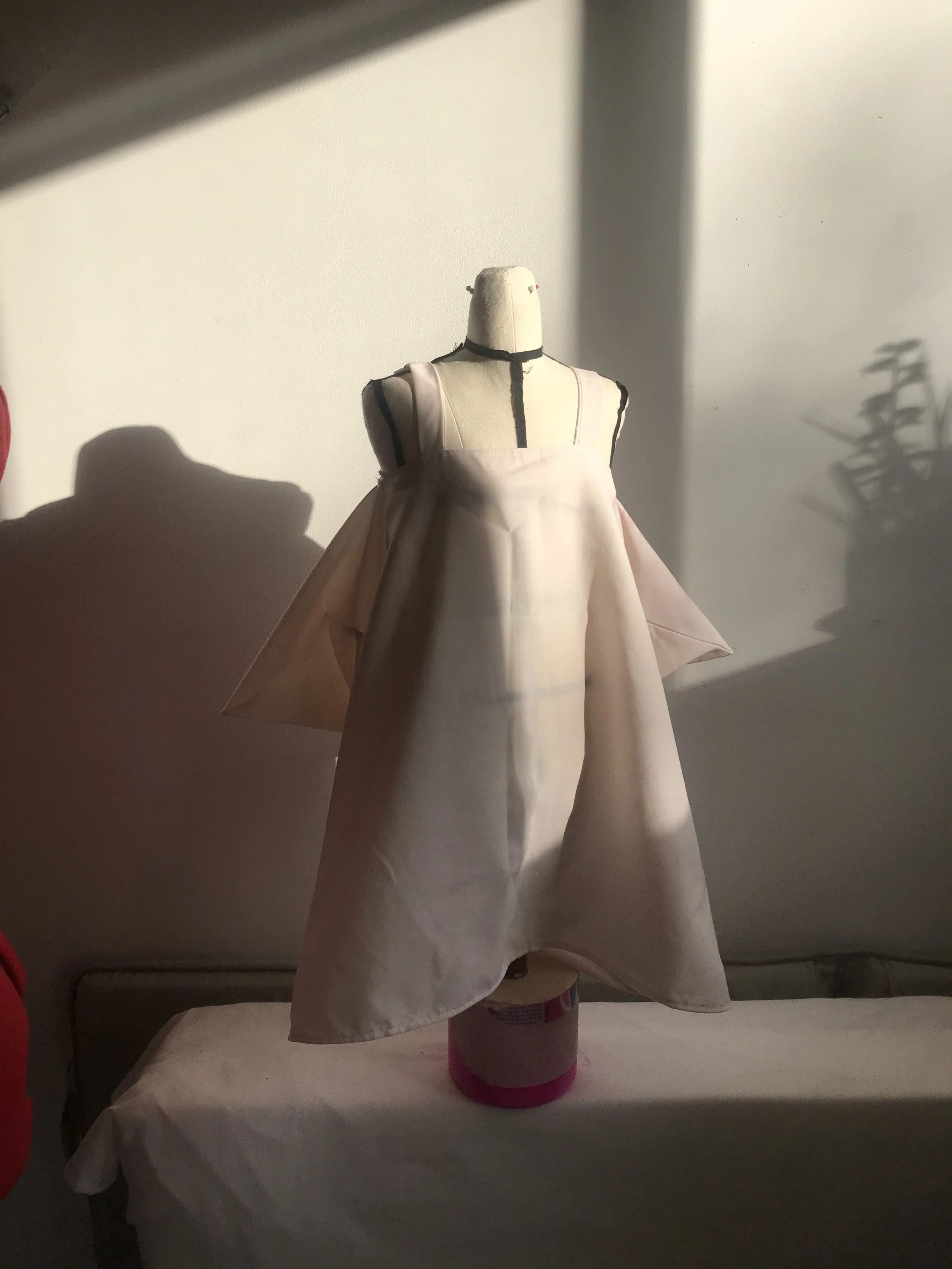
Issey Miyake Dress Front cut from cotton that was accidentally dyed in the wash. Easy to construct, simple rectangle pieces allowed to use up a majority of fabric with minimal waste
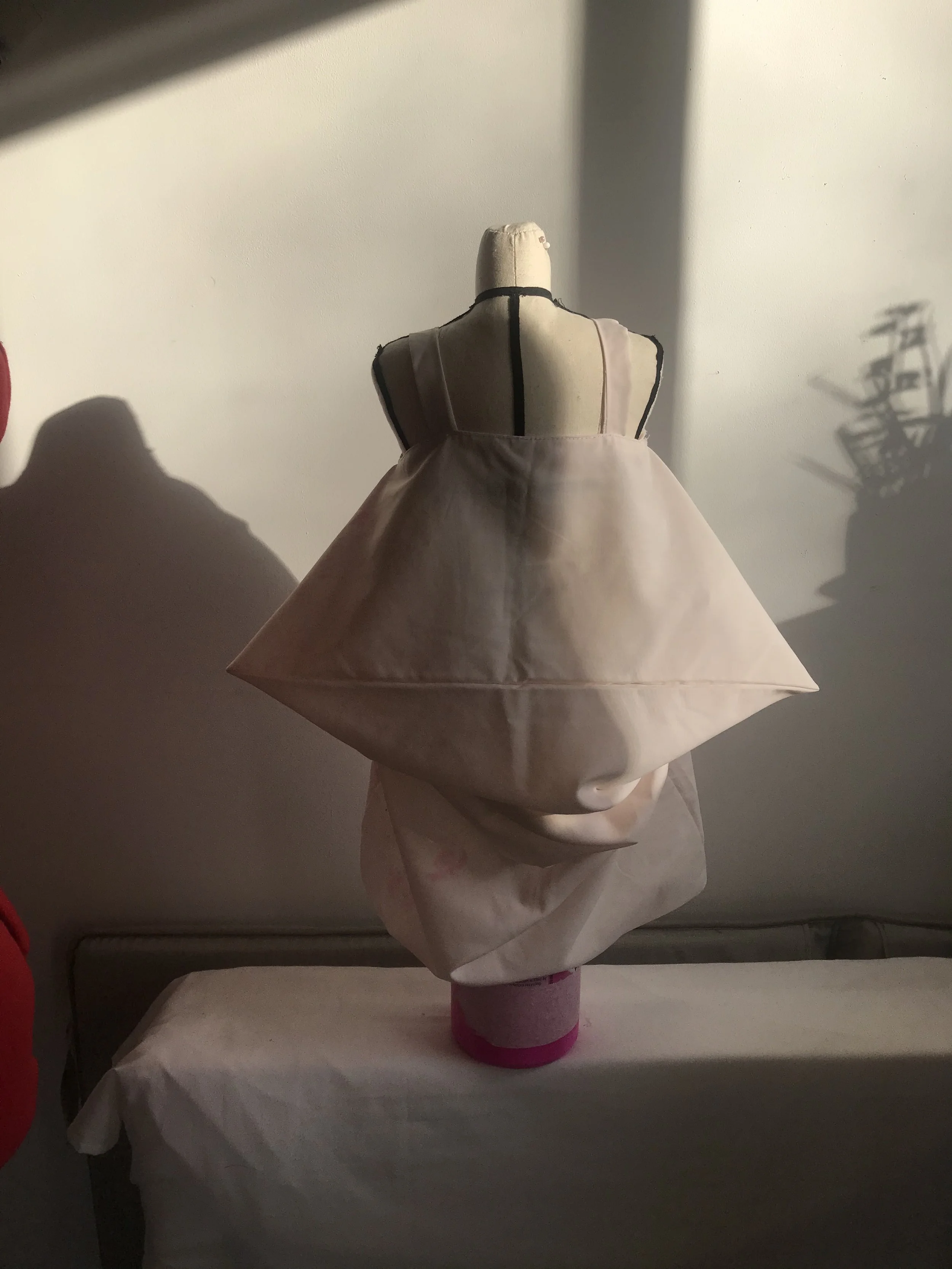
Issey Miyake Dress back
Issey Miyake show finale at Paris Fashion Week, March 2016
A step-by-step demonstration of the seamless A-POC fabric being used to create multiple garments. COURTESY MIYAKE DESIGN STUDIO
“allows unrestricted body movement while enabling the fabric to maintain its form,” and A-POC (“A Piece of Cloth”), which was made from a single thread with the aid of an industrial knitting or weaving machine programmed by a computer - Brittanica, 2022
Vanessa Duque
“the relationships she discovers between techniques, materials and research”
I have reimagined Pongee (Synthetic) through the use of vertical and horizontal pin-tucks, causing the material to be reinforced and structured.
Printed velveteen was reimagined with a secondary layer of poly cotton and the Mola technique was used to create depth.
Velveteen has a direct relationship with upholstery and soft furnishings, however when in joined in context with a poly cotton material (of less weight) it affects the end use of the velveteen and opens the options to wearable garments, outerwear and accessories.
Draped differently
Conceptualising what a dressed furniture could look like with the excess volume of this pattern and how to approach the idea of draping found objects away from the body and onto furniture - Exploring a draping concept that removes the garment from the body and into it’s respective space
What do we need to consider when designing sustainable and ethical products?
“Sustainability is a series of acts along the way” - Marni Stuart
Are there ethical and sustainable issues you need to address?
Throughout my samples, I have used recycled, second hand material either discarded from my own use or purchased from Savers, meaning that all materials either natural or synthetic have had a previous life.
Will you need to change the method or material used? What will the material swatch be used for and where will it end up?
I believe that the cotton material used along with remnants and other fabric pieces I have from Savers, will uphold the ethical and sustainable question of materiality, as a natural fibre will break down at the end of life. However I do intend on experimenting and exploring further with volume and the environment, meaning that I will maintain a conscious mind on threads used (avoid any polyester threads) and experiment with pattern making along with filling - view my options and trial various ways of reusing materials and waste.
Nylon tulle used to create a shibori sample has multiple negative touch points, Nylon is derived from petroleum, meaning that decomposition of material matter is un-known, as a long lasting product it challenges the relationship and value of garment and wearer, especially since styles change so rapidly, yet the fluro pink will stay for an undefined period of time. To combat this, I would aim to reuse the boiled water that was used to activate the thermoplastic effect and construct a multi use garment and artwork that can be valued for “holding time” - one of one.
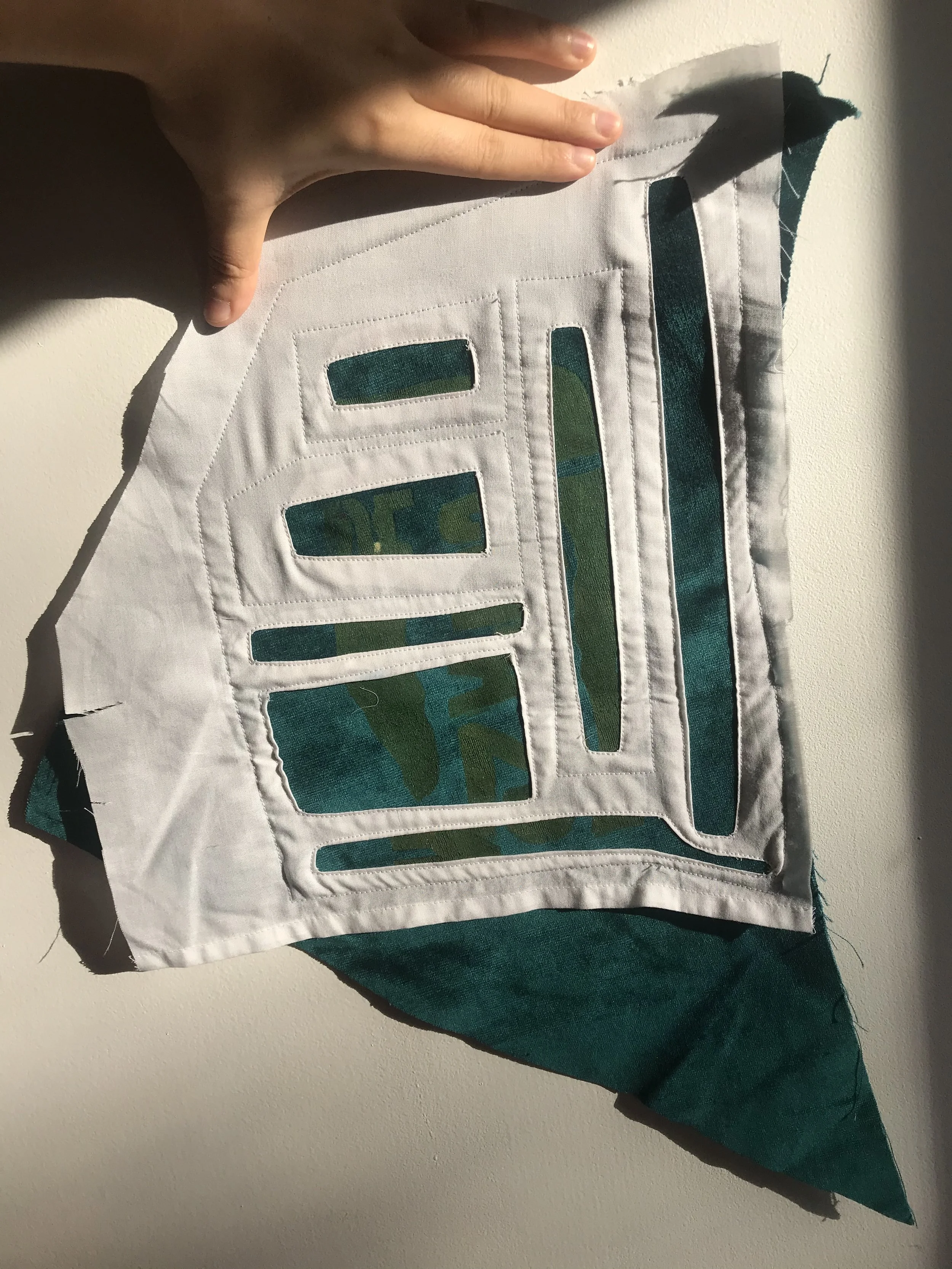
Printed velveteen sample used in a Poly cotton top, velveteen bottom layer Mola sample: Best suited for over shawls, vests and upholstery. I did thoroughly like the spacing between each rectangle and the finish that was achieved on the machine. The repetition of squares allowed for the visual interest of the negative space to shine through

Pin-tucked printed sample on woven cotton: Best suited for T-shirts, shirts, dresses and skirts. Sewing pin-tucks on a curve became more difficult as I reached the top of the curve, I would like to sample curve pin-tucks to understand how to create a cleaner finish
Alexandra Bricken
.
Alexandra Bricken .
German Installation artist Alexandra Bricken, formally a fashion designer, explores “the human body as a ‘moving sculpture’ – woven with unruly desires, pleasures and violence” throughout her practise. She digs deeper into a “deep exploration of materialism, man versus machine, and man as machine” as she plays with found materials and the every day nuances of value behind materiality.
Material VS/& Message
Contrast between both projects depict the conceptual thought behind the sample swatches and where I want to further expand the relationship between text/graphic elements and materiality and presentation
Andrew Boyd and Gan Golan
.
Andrew Boyd and Gan Golan .
The NYC Metronome adopted a new ecologically sensitive mission in 2019. Rather than measuring 24-hour cycles, it is measuring what two artists, Gan Golan and Andrew Boyd, present as a critical window for action to prevent the effects of global warming from becoming irreversible - New York Times,2019
“The Climate Clock melds art, science, technology, and grassroots organising to get the world to #ActInTime.The project is centred on a simple tool: a clock that counts down the critical time window to reach zero emissions (our “Deadline”), while tracking our progress on key solution pathways (“Lifelines”) - Climate clock,2022
A digital clock in this context communicates much more than just numbers, it engages the audience in ways that resonates with everyday nuances such as alarm clocks, stop watches and a sentiment of “time” running out. Communicating messages to this extent, wether material or digitally would enhance the value and communication of the physical material sample - exploring this concept further would enhance the purpose of the final swatch


